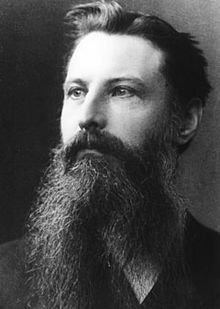Friedrich Wilhelm Zopf
| Friedrich Wilhelm Zopf | |
|---|---|
 |
|
| Born | December 12, 1846 |
| Died | June 24, 1909 (aged 63) |
| Residence | German |
| Nationality | German |
| Fields | Botany and Mycology |
Friedrich (or Friederich) Wilhelm Zopf (December 12, 1846 – June 24, 1909) was a well-known German botanist and mycologist. He dedicated to his whole life with fungal biology, particularly in classification of fungi and dye production in fungi and lichens. Besides, his textbook on fungi called “Die pilze in morphologischer, physiologischer, biologischer und systematischer beziehung (Translation: The mushrooms in morphological, physiological, biological and systematic relationship)” in 1890 was also an outstanding work on the subject for many decades. Thus, his numerous contributions gave him a special status in mycological history.
Wilhelm Zopf was born in Roßleben in Thuringia in 1846. Before going into biological science area, he has been an elementary school teacher in Thondorf at Mansfeld when he was 21-year-old.
In 1874, Wilhelm Zopf decided to leave his teaching position and turned into studying natural sciences at the University of Berlin. After that, he received his PhD with a dissertation entitled “Die von Conidienfrüchte von Fumago (Translation: Conidia of Fumago)” at the University of Halle in 1878.
As Wilhelm Zopf obtained his degree, simultaneously, he backed to Berlin as an adjunct professor teaching at the Agricultural College for a few years. In 1883, he was invited to be a head of the cryptogamic laboratory at the University of Halle. In the period of 1883 to 1899, he made extensive studies on Chytridiales and other small aquatic fungi parasitic in algae and small animals. Likewise, he also published an authoritative fungal textbook in which he followed a classification similar in part to that of Julius Oscar Brefeld but placed Ascomycetes last in 1890. In this group, he made them went from the simple forms, like Saccharomyces, Endomyces, Gymnoascaceae, to Pezizales. In addition, he recognized the formation of ascogonia in many ascomycetes and even the union of these in Pyronema, with club-shaped “pollinodia”, but expressed doubt as to their real sexual function.
...
Wikipedia
